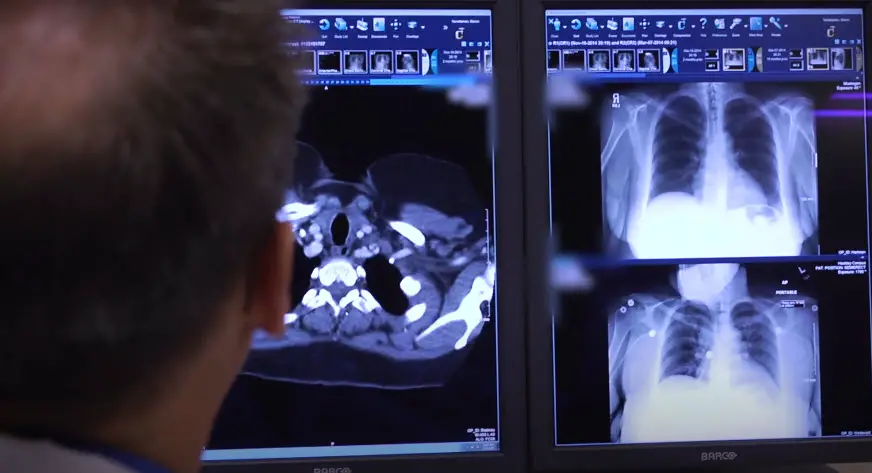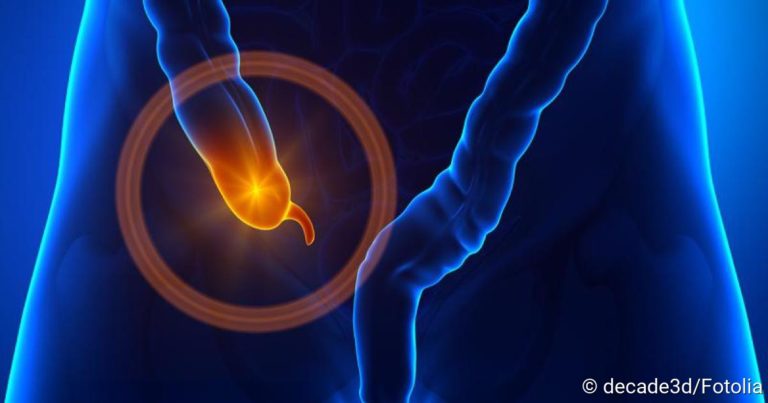Sarcomatoid Mesothelioma
What Is A Sarcomatoid Mesothelioma?
The sarcomatoid mesothelioma is a type of mesothelioma (Source), which is composed of giant, spindle-shaped cells (Source) in fibrous bundles (Source).
These cells are defined as spindle-shaped, and they have an elongated nucleus. However, in the tougher cases (Source), they have multiple nuclei, so they are very similar to the healthy tissue.
The sarcomatoid mesothelioma condition is closely related to asbestos exposure (Source) and, in most cases, it appears as a nodule or a small lesion and not as a localized mass. The asbestos has needle-like fibers that are able to puncture the lung tissues (especially the lung linings) (Source). These fibers can cause the inflammation of the lung tissues (Source), which can induce their cells to mutate and become carcinogenic cells (Source).
Where is the Sarcomatoid Mesothelioma located?
The sarcomatoid mesothelioma can appear in any serous membrane of the human body. The most common site where the sarcomatoid mesothelioma appears is the pleural cavity, and it grows progressively and produces unspecific respiratory symptoms.
However, the sarcomatoid mesothelioma can also appear in the serous membrane around the abdominal organs, around the heart, or even around other organs (like the testicles).
Sarcomatoid Mesothelioma Symptoms
The symptoms of a sarcomatoid mesothelioma will vary according to the part of the body that it affects. However, as it was said before, the most common location is the pleura, so the symptoms related to this location are the ones that will be further described.
Difficulty breathing (dyspnoea), chest pain, persistent cough (with or withouth blood), pleural effusion (fluid in lungs), fever, prolonged hoarseness, weakness, easily tired, poor sleep, low oxygen levels, unintended weight-loss, anemia, nausea and loss of hunger (anorexia) are some of the symptoms. When it develops in the peritoneum (abdominal lining), the symptoms include peritoneal effusion (swelling in the abdomen), abdominal pain, abdominal “fullness”, nausea and vomiting, constipation or blockage, among others.
On the other hand, when it is located in the pericardium (serous membrane of the heart), it can cause chest pain, breathing difficulty, tachycardia or bradycardia, symptoms of low blood flow, among others. Finally, when located in the testicles, it appears as a swelling or a mass on the affected testicle.
Diagnosis: How Is The Sarcomatoid Mesothelioma diagnosed?
The sarcomatoid mesothelioma is a type of cancer that can be very difficult to diagnose. In fact, the experts say that, in many cases, this type of cancer is misdiagnosed at the early stages.
The patient must be evaluated by a qualified and experienced medical team. This team is usually formed by a pulmonologist, pathologist, radiologist, oncologist, among others. The difficulty of its diagnosis can be attributed to different reasons.
The first reason is that some sarcomatoid mesothelioma cells are very similar to the healthy tissue, so it can be very difficult for the doctors to determine if they are malignant or not. This is why the diagnosis of this type of cancer requires a biopsy of the affected tissue sample.
In order to do so, the doctor will remove a small piece of the tumour, a removal that can be carried out by different methods (from a needle biopsy to open surgery). Likewise, the sample of tissue must be analyzed by a highly qualified pathologist to avoid mistakes. In fact, some studies show that it can easily be confused with other forms of lung cancer.
At this point, it is very important to know that if the tissue sample obtained during the biopsy is too small, the pathologist might not be able to evaluate all the cells and tumor characteristics, which could lead to a misdiagnosis.
Another reason that can explain why the sarcomatoid mesothelioma diagnosis is so difficult to perform is the fact that, as the patient has nonspecific symptoms, it takes more time for him/her to visit a doctor and, once that he/she visits the doctor, the doctor usually thinks in other diseases that tend to be more common. This is why the experts say that every time a person experiences sarcomatoid mesothelioma symptoms, and the person has a prior history of asbestos exposure, he/she must be studied to increase the chance of survival.
Once the doctor has completed the medical record, he/she can ask for some imaging tests, including a chest X-ray, CT scan or MRI and blood tests.
In the last years, the experts have developed a new technology which consists in detecting the presence of certain biomarkers in the liquid around the lungs. The innovative fact about this is that these biomarkers can help to point to another type of disease.
The experts have also concluded that the presence of a protein called “cytokeratin” is closely related to the sarcomatoid mesothelioma. Taking advantage of this discovery, the pathologists usually use a tissue staining technique called immunohistochemistry to differentiate the sarcomatoid mesothelioma from other cancers.
This staining technique uses markers able to react with specific proteins contained in the tumoral tissues, so they are specific for each type of cancer. Among the most useful markers for diagnosing mesothelioma the cytokeratin 5/6, podoplanin, WT1 and calretinin can be included.
Finally, a nuclear grading can be also used to confirm the diagnosis.
What is the incidence, prognosis and survival rate of Sarcomatoid Mesothelioma?
Although the sarcomatoid mesothelioma is the less common histological type (between 10 and 15 percent of all mesothelioma diagnoses), it is very aggressive. In fact, the statistics show that only 17 to 30 percent of patients diagnosed with late-stage pleural sarcomatoid mesothelioma survive for the following 2 years and only 1 to 8 percent survive for five years.
Other statistics even say that most patients live for less than 6 months after the diagnosis. The experts agree that this is due to the fact that sarcomatoid cells have the capability to metastasize faster than others and it is more resistant to the current treatments than other mesothelioma types.
This quick spreading can be attributed to the fact that sarcomatoid cells do not bundle themselves in a uniform mass such as other cancer types, which is especially bad when the sarcomatoid mesothelioma has already spread before the diagnosis. Likewise, the fact that sarcomatoid mesothelioma is usually diagnosed in the latest stages reduces the possibility of offering a curative treatment to the patient.
The studies have also shown that other factors can influence the sarcomatoid mesothelioma prognosis. For example, women usually have longer rates of survival than men and younger patients tend to have a better prognosis when compared to older patients.
Remember that these are indicative rates and only a qualified doctor with enough experience in this area can determine each patient’s prognosis.

Sarcomatoid Mesothelioma Treatment
There are different techniques that can be used to treat a sarcomatoid mesothelioma condition according to the stage of the cancer and the specific location.
It is very difficult to perform surgery in this kind of cancer because these tumors are very rigid and tend to grow very fast (especially in the chest wall), which makes it very difficult to be removed completely with this treatment.
Likewise, when this cancer affects the peritoneal tumors, it is usually located over the abdominal soft internal organs, making the identification of its limits during the procedure very difficult.
Chemotherapy on its own is usually ineffective because the sarcomatoid cells are resistant to most chemotherapy agents. The chemotherapy regimen which has proven to be more effective to treat sarcomatoid mesotheliomas is the “CYVADIC”, which incorporates cyclophosphamide, vincristine, doxorubicin, and dacarbazine.
Likewise, the radiotherapy may not be effective because it acts over the tissues which are affected by the cancer and, in the case of the sarcomatoid mesothelioma, these cells are so similar to the healthy cells that radiotherapy cannot distinguish them.
All this explains why, in most cases, the patient will be treated with surgery, chemotherapy and radiation, said in other terms, with a multimodal treatment that is difficult to determine.
Another aspect that makes the sarcomatoid mesothelioma treatment difficult is that it metastasizes very quickly, so when it is diagnosed, it is already widespread.
Due to the difficulty of treating a sarcomatoid mesothelioma, the researchers are studying a new way of treatment that looks to be very effective. The immunotherapy allows modifying the patient’s own cells to kill the sarcomatoid mesothelioma cells. This is very innovative because it also uses modified viruses to alter the mesothelioma tumor cells genes.
However, this kind of treatment is still under research. Finally, it is also important to remember that for those patients who are diagnosed in the latest stages of sarcomatoid mesothelioma, palliative care and emotional supportive therapies are available to improve the patient’s quality of life, even when they do not prolong the patient’s life expectancy.
Differential Diagnosis of Sarcomatoid Mesothelioma: Other Similar Conditions
As it was said before, in many cases, the sarcomatoid mesothelioma can be confused with other diseases. Among the most common conditions that must be included in the sarcomatoid mesothelioma differential diagnosis, fibrous pleurisy, fibrosarcoma, sarcoma, pleural liposarcoma, localized fibrous tumors, malignant fibrous histiocytoma (also known as undifferentiated pleomorphic sarcoma), the solitary fibrous tumor of the pleura (also known as hemangiopericytoma) and the metastasized renal cell carcinoma must be included.
Classification
The mesothelioma can be divided into different types according to the specific part of the mesothelium that has been affected. The most common type is the pleural mesothelioma (the one that affects the layer that surrounds the lungs); however, there also exist the peritoneal mesothelioma (the one that affects the layer that surrounds the abdomen organs), the pericardial mesothelioma (the one that affects the layer that surrounds the heart) and the testicular mesothelioma (the one that affects the layer that surrounds the testicles).
The mesothelioma can be also histologically classified according to the main cell types that compose it (epithelioid, sarcomatoid and biphasic) into sarcomatous mesothelioma, diffuse malignant fibrous mesothelioma, and spindled mesothelioma.
This classification is very important because each tumor responds in a different way to the available treatments according to the cell type that predominates in its composition and affects the patients’ prognosis.
The sarcomatoid mesothelioma can also be classified into different subtypes according to the combinations of cells that forms it. For example, the lymphohistiocytoid, is a sarcomatoid mesothelioma with sarcomatoid, inflammatory and immune cells. It represents 1% of all the sarcomatoid mesothelioma conditions and they are usually large and spindle-shaped.
The desmoplastic sarcomatoid mesothelioma represents 5% of all the sarcomatoid mesothelioma diagnosis. It is composed of sarcomatoid and “bland” cells, which give it an aspect, which is very similar to the benign fibroid, long and collagen bundles. In fact, the experts define it as a patternless tumor, which is very difficult to diagnose.
For its part, the hererologus sarcomatoid mesothelioma is very different from the other ones, as it can even have bone cells in tumors that are not attached to bone tissue.
Finally, the osteosarcomatous and the chondrosarcomatous have bone and cartilague cells respectively.
Mesothelioma As A Condition
The mesothelioma is defined by the experts as a type of cancer that can affect the mesothelium, a thin layer of tissue which covers and protects most of the organs in the human body, hence its name.
This type of cancer is very aggressive. In fact, the statistics suggest that, per year, at least 2,500 deaths are related to mesothelioma, and it caused more than 31,000 deaths in the United States between 1999 and 2010.




